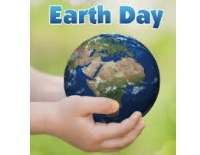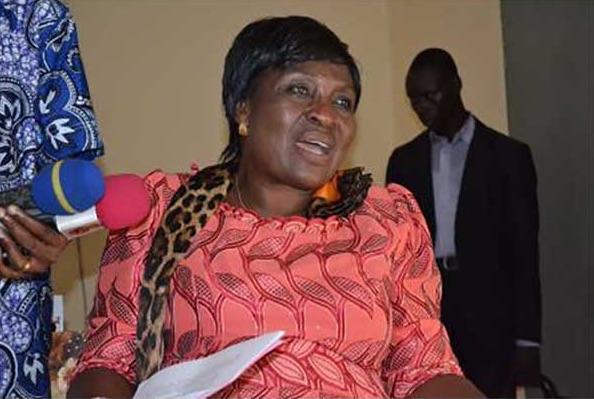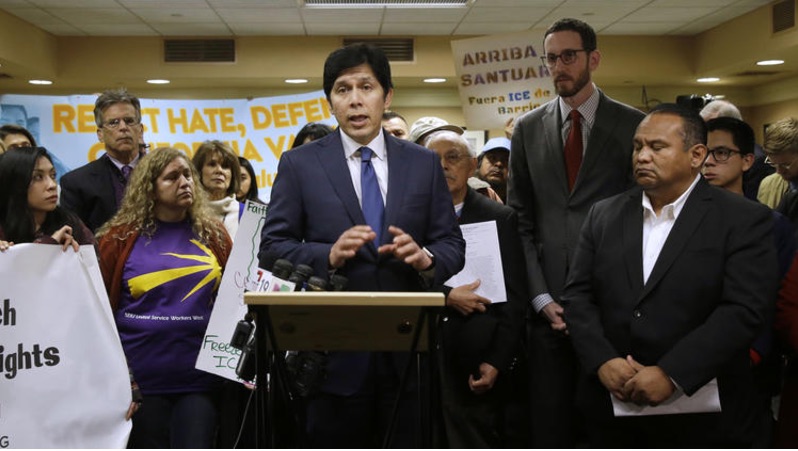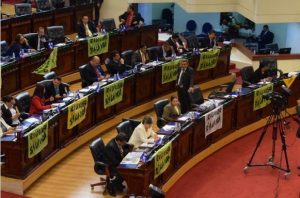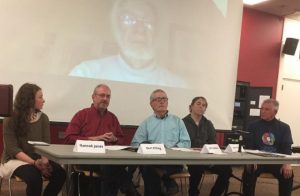Two major mobiliztions to preserve the planet took place this month in the United States and Canada. Close to a million people turned out across the United States and Canada for the March for Science on April 22. A week later, at least a quarter of a million turned out for the Peoples Climate March.
At the main March for Science in Washington, D.C., the American scientist Bill Nye, an honorary co-chair of the event, delivered a speech to a crowd of tens of thousands in pouring rain. ‘Show the world that science is for all. Our lawmakers must know and accept that science serves every one of us,’ Nye said before shouting out, ‘Save the world!’
For the Peoples Climate March a week later, over 200,000 people took part in the Washington, D.C. march and another 50,000 or so in 370 sister marches across the country. According to its national coordinator, ““This march grew out of the relationship building among some of the country’s most important progressive organizations and movements. . . . to pressure global leaders to act on climate change. There was a simple demand – act . . . act on climate while creating family-sustaining jobs, investing in frontline and indigenous communities and protecting workers who will be impacted by the transition to a new clean and renewable energy economy.””
If one were to map the largest turnouts, it would look almost the same as the map we published back in January for the women’s marches against the inauguration of President Trump, which, in turn was almost the same as the map for the election results.
The marches for science were appropriately set for April 22, which is recognized by the United Nations as Mother Earth Day.
The UN initiative came from Latin America, and, indeed, it was celebrated this year in most Latin American countries, including statements from the Presidents of Bolivia and Venezuela that linked it to the culture of peace and to socialism. In addition to Bolivia and Venezuela, we gave some details from celebrations in Mexico, Chile, Colombia, Honduras, Nicaragua, Panama, Peru and Argentina.
For example, in Honduras, public and private environmental organizations planted thousands of trees in urban and rural areas to raise awareness of the importance of caring for the planet, while in Argentina there were workshops, ecological activities and even the country’s first “bio festival” of music, held in the city of Rosario.
In addition to the science marches, there were many other celebrations of Earth Day across the United States and Canada. These included Earthday fairs with educational activities, tree planting and community environmental cleanups. Especially unique and appropriate was the earthday event in North Dakota, where the horseback riders of the Dakota Exile Healing Ride celebrated the “Sweet Corn Treaty” that occurred in 1870 with the Chippewa and Sioux tribes. They called for “sharing our homelands and responsibilities to the lands, and water as well as respect for each other’s cultures and traditions by sharing once again as Dakota did”.
One would have hoped that Earth Day would be celebrated around the world and would indicate a growing consciousness for the culture of peace, given that sustainable development is one of its eight program areas. Indeed, some claim that these celebrations involved “a billion people.” in “195 countries.” Unfortunately, our survey of Earth Day activities around the world failed to confirm any large participation outside of North and South America.
Certainly, there is a growing consciousness around the world that we must act to save our planet, a consciousness that complements the anti-war consciousness that we have seen on the UN International Day of Peace. Although the consciousness is worldwide, perhaps it is appropriate that the largest mobilizations at this time are taking place in the United States, since it is the American empire that poses the greatest threat to the environment.
|
FREE FLOW OF INFORMATION |
TOLERANCE AND SOLIDARITY |
DEMOCRATIC PARTICIPATION |
SUSTAINABLE DEVELOPMENT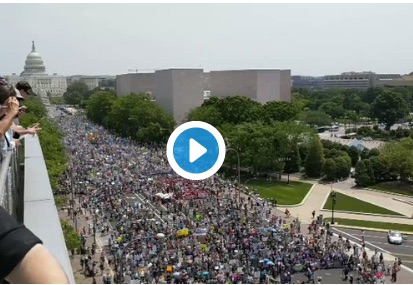 USA: Peoples Climate March a Huge Success: Final Count: 200,000+ March in D.C. for Climate, Jobs and Justice |
|
WOMEN’S EQUALITY |
HUMAN RIGHTS |
DISARMAMENT AND SECURITY |
EDUCATION FOR PEACE |
